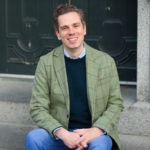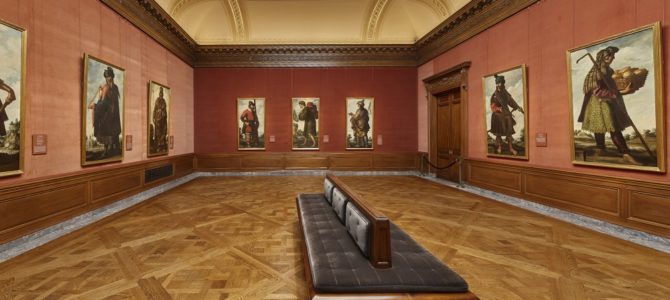
As Christians celebrate Holy Week and Jews celebrate Passover, an exhibition now at The Frick Collection in New York reflects on some of the most important figures in the history of both religions, as imagined by one of Western art history’s most important artists. “Zurbarán’s Jacob and His Twelve Sons: Paintings from Auckland Castle” is a visually stunning show that opened at the Meadows Museum in Dallas before moving to Manhattan last month.
It brings together for the first time in this country 13 monumental paintings of the biblical patriarch Jacob and his 12 sons, the founders of the 12 tribes of Israel, by the Spanish Baroque painter Francisco de Zurbarán (1598-1664). At the end of April, the paintings will be re-divided back to their respective homes in England, where they have resided since the eighteenth century, so I highly recommend that you see this (probably) once-in-a-lifetime show while you can.
The Spanish Caravaggio
Francisco de Zurbarán is often referred to as the Spanish Caravaggio, and for good reason. Like his somewhat older Italian contemporary, Zurbarán often employed a starkly lit realism, along with a heightened sense of drama that came to characterize how we think of Baroque art, so the viewer can’t help but pause in silence before one of his works.
Yet if Caravaggio is all about violence and movement, Zurbarán is all stillness and contemplation. As a result, his quietly powerful works have fascinated and influenced artists as diverse as Édouard Manet, Georges Braque, and Salvador Dalí.
In the case of “Jacob and His Twelve Sons,” Zurbarán chose a theme rarely depicted in Western painting. In fact, I can’t think of any comparable examples, certainly not on this scale. The patriarch Jacob, if you remember your Bible, was the grandson of Abraham and Sarah, and the son of Isaac and Rebecca. He was the father of one daughter, Dinah, and 12 sons: in birth order, Reuben, Simeon, Levi, Judah, Dan, Naphtali, Gad, Asher, Issachar, Zebulun, Joseph, and Benjamin. God renamed Jacob “Israel” after his famous bout of wrestling all night with an angel, described in Genesis 32:22-32.
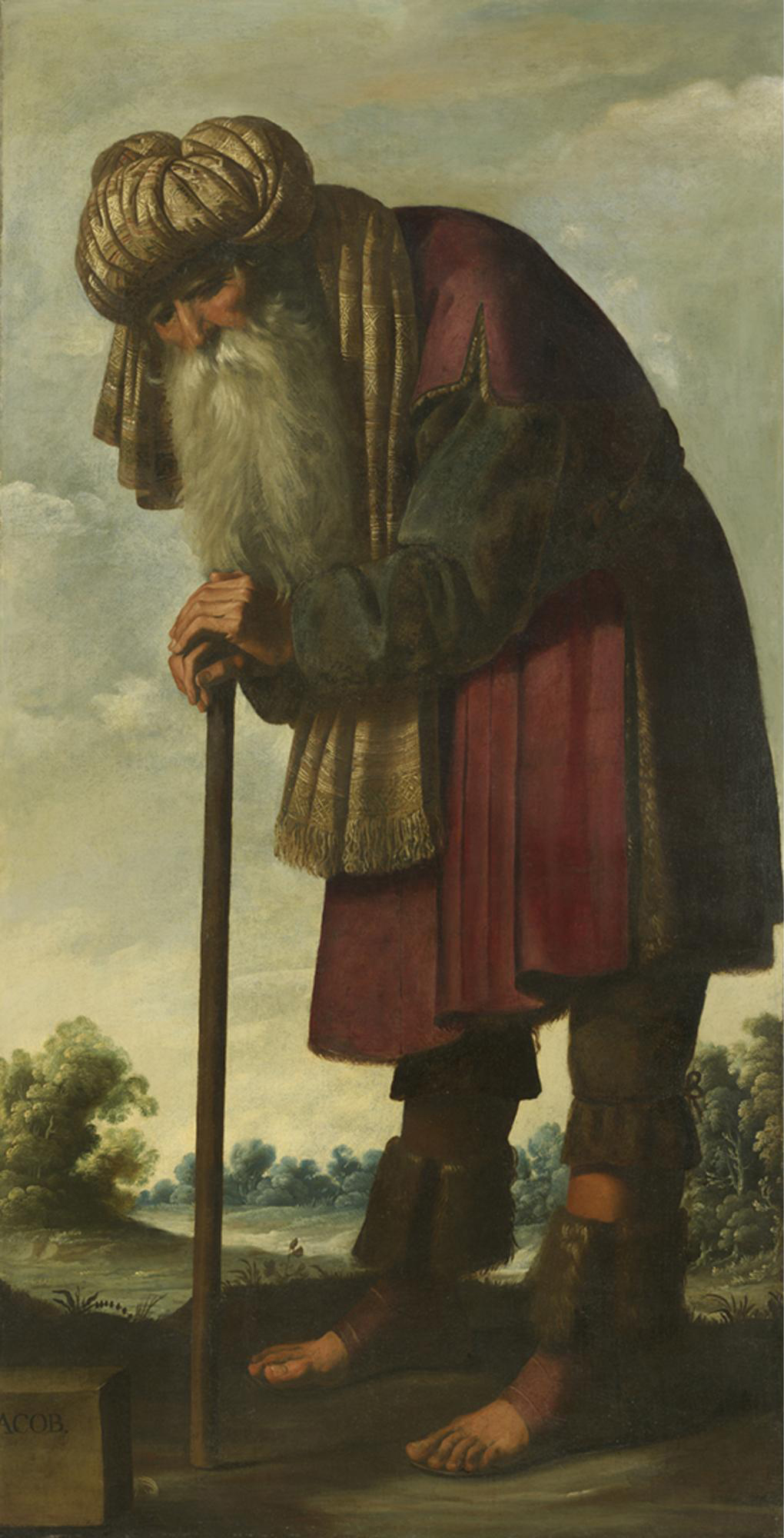
The Frick show is a perfect example of something I often complain about when seeing works of art, particularly religious works of art, in museums rather than in the places for which they were originally commissioned. Yes, no matter how well I might know any work of art from an illustration or careful examination of an image online, there really is no comparison to finally seeing in person something which I think I already understand.
Huge and Strange Canvasses with Impressive Textiles
In this case, the exhibition at the Frick immediately impressed me with the sheer size and great dignity of these images, but after looking at the paintings for a long time in person I realized Zurbarán meant for these paintings to be seen from below. Although the show has hung the canvases at a decent height, somewhat above eye level, elements in several of the works seem strangely out of proportion, because I suspect that they are not displayed as the artist intended.
This is not the fault of the Frick, of course, which is not a cathedral or monastic chapter house blessed with massively tall ceilings, but if we were able to see things like the tilted angle of the column that accompanies Ruben, or Dan’s massive calves as shown from behind placed higher up on the wall, the figures in these paintings would take on an almost trompe-l’œil effect as they lean forward or look down at us from up above.
Each painting is about seven feet tall, and wonderfully strange. For identification, all of the brothers are shown carrying implements related to their father’s prophetic blessing, and each is standing by a stone bearing his name. Three of the figures are accompanied by charming, and slightly humorous, depictions of animals related to their particular prophecies. These include a very alert but ultimately non-threatening lion for Judah, a somewhat sad donkey for Issachar, and a rather odd wolf Benjamin holds on a leash.
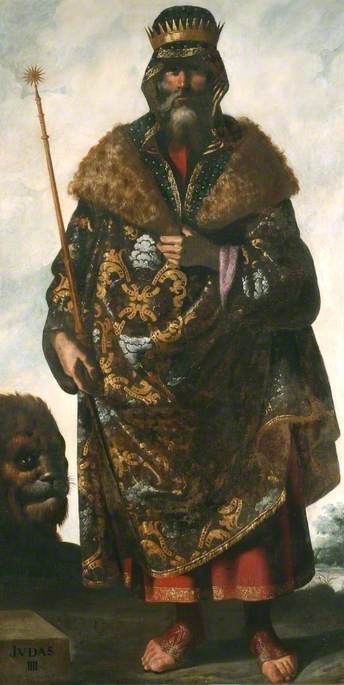
The Bible provides little physical description regarding Jacob or his progeny, which lets Zurbarán’s imagination run wild. No two of the figures look alike, which is rare when artists must portray groups of saintly individuals of unknown physical appearance, such as the 12 apostles. In this series, the brothers are dressed in myriad ways, from regal robes to impoverished rags, while Jacob is shown as a very elderly man in an elaborate, vaguely Turkish-looking costume, bent over and supported by his walking stick.
The Visual Connections to Latin America, Explained
None of the elaborate costumes these figures wear appears to have anything to do with Judaism. The exhibition placards not only provide the biblical text that explains each of the brothers’ fate, but note that at least some of the attire Jacob and the brothers wear is taken from Northern European prints of these individuals and biblical scenes the artist owned. Moreover, some of the textiles the figures wear were products Zurbarán, whose family was in the haberdashery business, obtained from Europe, the Middle East, and even Latin America.
In “Zebulun,” for example, the figure is wearing what the Frick describes as “jaunty cropped pants,” whose pattern remind me of the brightly colored, Inca-inspired blankets you can pick up in traditional weaving shops in Peru. Some of the other brothers also have articles of clothing or swaths of fabric that look like they could have come from somewhere in the Americas. This visual connection with Latin America is no accident, which makes this show all the more interesting for an audience in the Western Hemisphere.
Some during the seventeenth century believed the native peoples of Latin America were the descendants of the legendary “Ten Lost Tribes” of the Kingdom of Israel, who disappeared from history following the Assyrian invasion of the eighth century BC.
It’s certainly possible that, for evangelization, a group of religious leaders in South America might have wanted to visually connect the local people’s culture and that of the ancient Israelites by commissioning this series. Moreover, we know from documentary evidence that not only did Zurbarán have relatives living in Peru, who acted as his agents in obtaining commissions for his workshop, but there are records of him sending large groups of paintings to religious institutions in Peru, Argentina, and elsewhere on the continent.
Given the highly unusual subject matter and apparently Latin American details, scholars seem reasonably certain these paintings were supposed to be shipped to South America. For reasons lost to history however, they never reached it. In fact, no one quite knows what happened to them from the time they were completed in the mid-1600s until the time they showed up in a London auction room in 1727, when they were purchased by James Mendez, a successful Jewish merchant and art collector of Portuguese descent. At one time there was a theory that English pirates seized them from a Spanish galleon, which could explain how they ended up in Britain, but at this point that theory has no basis in fact.
A Once in a Lifetime Chance to See ‘Benjamin’
When Mendez died in 1756, “Jacob and His Twelve Sons” were sold at auction. All but “Benjamin” were purchased by Richard Trevor (1707-1771), bishop of Durham, who would have purchased “Benjamin” as well but was outbid by the duke of Ancaster. Trevor had to be content with a copy of “Benjamin” by the English painter Arthur Pond.
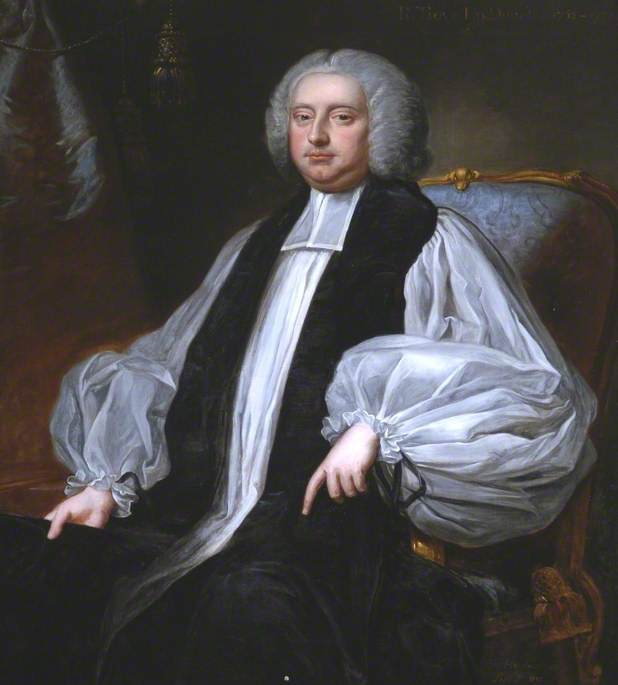
This little detail makes the Frick exhibition all the more unique for visitors. The painting of “Benjamin” in the show is not the Pond copy, but the original Zurbarán, which descendants of the duke of Ancaster graciously lent for this exhibition. The painting has hung in the family chapel at Grimsthorpe Castle in Lincolnshire for centuries, meaning that even if you went to England and wanted to see all 13 of these paintings, you could not see them together as you can right now in New York.
Once “Jacob and His Twelve Sons” entered Trevor’s substantial art collection, they were turned to a new purpose. Trevor was a prominent promoter of tolerance for both Jews and Catholics in England at a time of growing recognition that the maltreatment of these groups was morally and politically untenable. The year before he bought the paintings, Trevor preached quite vociferously for the passage of the “Jewish Naturalization Act,” which would have allowed Jews living in England to become citizens without first converting to Anglicanism. Unfortunately, the law was rescinded due to overwhelming anti-Semitic protests, and Trevor had to start his efforts over again.
As part of his charm offensive to get the powers that be to come round to his way of thinking, Trevor set up paintings of the twelve apostles in the main hall of his country estate, Auckland Castle, which led into the dining room where Zurbarán’s images were displayed in conjunction with paintings of the four evangelists. Trevor wanted to force visitors to look at these juxtapositions of key figures from Judaism and Christianity in the prominent, public areas of the house. This allowed him the opportunity to discuss issues with his guests such as religious tolerance and rights for fellow residents of the British Isles who were not members of the Church of England.
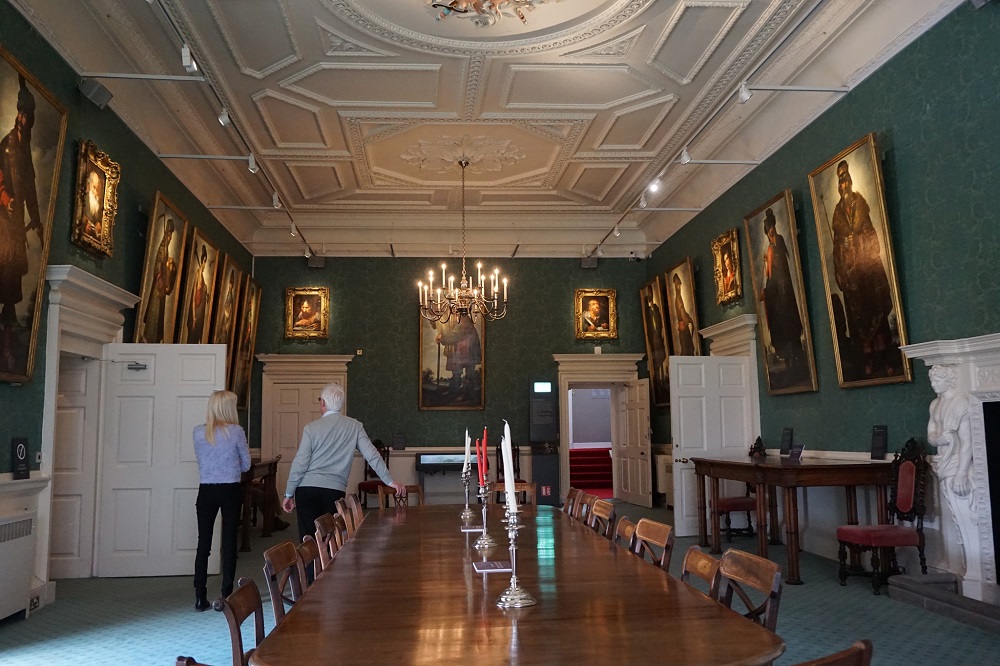
Finding God ‘in the Beauty of Holiness’
Today the Auckland Project, a private foundation that owns Auckland Castle and Bishop Trevor’s Zurbaráns, has an ambitious goal of using the castle and its contents to bring back a sense of the sacred into a world that has lost sight of it. The project sent out “Jacob and His Twelve Sons” on tour while renovations to the castle are underway. As Project Chairman Jonathan Ruffer explains:
For me, the biggest thing of all is God, and I want Auckland Castle to be a place where God may be found ‘in the beauty of holiness’. I also understand that we live in an age when there is a widespread grumpiness at the very thought of the existence of God. The experience at Auckland Castle extends the idea of seeking things bigger than ourselves to other avenues of inspiration. Art, music, gardens, nature, food, silences, walks and the patina of heritage will all be found here. These things we call ‘the holiness of beauty’ sitting in harmony with the beauty of holiness – and in tension with it.
Of course, for most of us Auckland Castle is not as easily accessible as is the Frick Collection in Manhattan, meaning that if you are even the least bit curious about seeing these extraordinary paintings, now is the time to do so. Beyond their artistic brilliance, political significance, and rare reunification of all 13 original canvases, they provide an opportunity well in keeping with what Trevor originally intended when he bought these pictures.
These works of art can remind Christians and Jews that, however tumultuous and often tragic their shared history, they believe in the God who gave Jacob the name “Israel,” and the 12 sons of “Israel” formed the roots from whom the people of Israel, including Jesus Christ, later sprung. To me, seeing these paintings seems one very fitting way for members of both groups to mark Easter and Passover: perhaps, I daresay, by attending this exhibition together.
“Zurbarán’s Jacob and His Twelve Sons: Paintings from Auckland Castle” is at The Frick Collection in New York through April 22.
